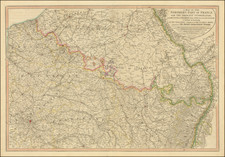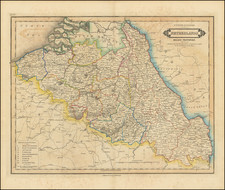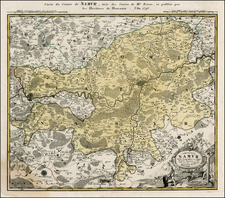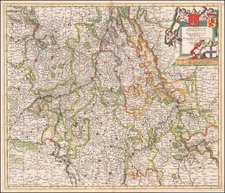Siege of Antwerp During the War of Austrian Succession
Finely executed hand drawn plan of the fortifications of the Citadel and environs of Antwerp, along with an extensive report and journal of the Siege.
The citadel was designed by the Italian engineer Francesco Paciotto and built on the orders of the Duke of Alva. Initial construction was completed in 1572. After the Sack of Antwerp (1576) the citizens partially demolished the fortification, but it was reconstructed after the Fall of Antwerp (1585).
The War of the Austrian Succession (1740-1748) was ignited by the disputed succession of the Habsburg Monarchy following the death of Emperor Charles VI. The Pragmatic Sanction, intended to secure the throne for his daughter Maria Theresa, was challenged, leading to a pan-European conflict involving multiple powers, including France, Britain, Austria, and Prussia.
In aid of France's political interests, the French sought to weaken Austria by capturing strategic territories in the Austrian Netherlands (Belgium), with Antwerp being the major target due to its economic importance and strategic location.
In 1746, French forces under the command of Marshal Maurice de Saxe, one of the era's most accomplished military tacticians, laid siege to Antwerp. The city, renowned for its formidable fortifications, was considered a linchpin in the defense of the Austrian Netherlands. The French, leveraging their superior numbers and siege craft, implemented a comprehensive blockade and began systematic bombardment and mining operations to breach the city's defenses.
The defenders, outnumbered and outgunned, faced a dire situation. Despite their valiant efforts to repel the French assaults, the city's fall became inevitable after weeks of relentless siege, and Antwerp fell in July 1746.
The fall of Antwerp had far-reaching consequences. It bolstered French dominance in the region and significantly disrupted Austrian and British efforts to counter French expansion. The victory at Antwerp was part of a series of successes that allowed France to negotiate from a position of strength at the Treaty of Aix-la-Chapelle in 1748, which concluded the War of the Austrian Succession.









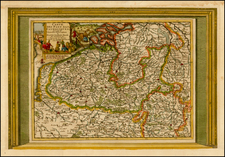
![[Antwerp]](https://storage.googleapis.com/raremaps/img/small/91034.jpg)
